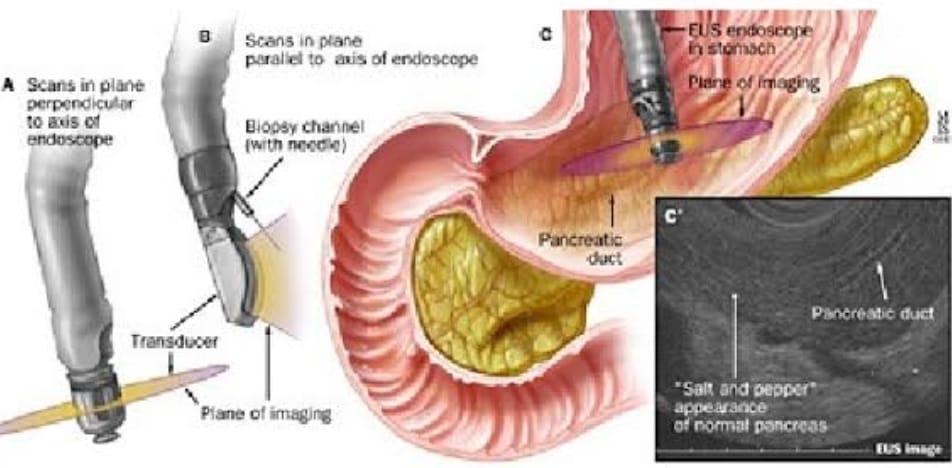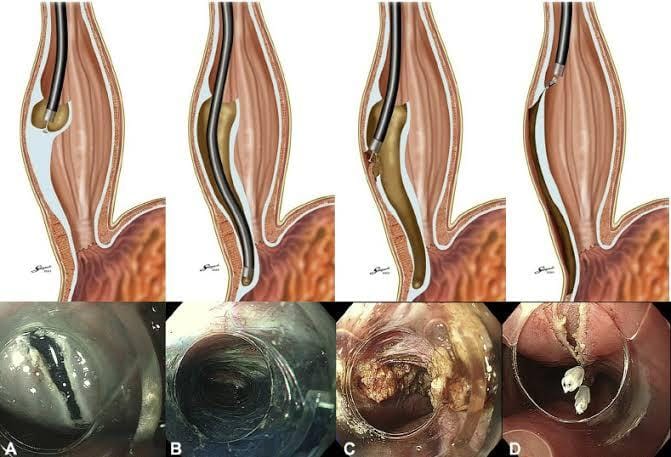What We Specialise in
Exploring ERCP: A Quick Patient Guide
ERCP, or Endoscopic Retrograde Cholangiopancreatography, is a procedure where doctors use a camera and X-rays to check your digestive system’s tubes.

How ERCP Works
When ERCP is Used
Why ERCP Makes Sense
During the Procedure
Conclusion
What You Need to Know Endoscopic Ultrasound (EUS)
Endoscopic Ultrasound, or EUS for short, is a special medical procedure that helps doctors see inside your body. It’s like a camera that goes into your body through your mouth or back passage to take pictures of your organs and insides.

How Does EUS Work?
Who Might Need EUS
Why is EUS Special
Conclusion
In simple words, EUS is like a special camera that helps doctors look inside your body to find out what’s wrong. It’s less rough, shows clear pictures, and helps doctors understand things better. If your doctor suggests EUS, don’t worry; it’s a smart way to learn more about your health and find the best way to help you feel better.
POEM & Third Space Endoscopy
If you or a loved one has been diagnosed with achalasia, a condition that affects the way food moves through your esophagus, you might have heard about the POEM procedure. Let’s take a closer look at what the POEM procedure is and how it can help treat achalasia.

What is Achalasia?
What is the POEM Procedure?
How Does the POEM Procedure Work?
During the POEM procedure:
- You’ll be given anesthesia, so you’ll be asleep and won’t feel any pain.
- The doctor will use a thin, flexible tube with a camera called an endoscope. This tube is passed through your mouth and into your esophagus.
- Using the endoscope, the doctor will make a small incision in the inner lining of your esophagus.
- They will then carefully cut the muscles that are causing the tightness, allowing food and liquids to move more easily.
5. The incision is closed, and the procedure is complete
Benefits of the POEM Procedure
- Minimally Invasive: There are no large incisions, so recovery is usually faster compared to traditional surgery.
- Better Swallowing: By relaxing the tight muscles, the POEM procedure can improve your ability to swallow food and liquids.
- Less Pain: Since there’s no big cut, you’ll likely experience less pain after the procedure.
- Short Hospital Stay: Most patients can go home within a day or two after the procedure.
Recovery and Follow-Up:
After the POEM procedure, you’ll need to follow your doctor’s instructions for a smooth recovery. This might include dietary changes and taking medications. Your doctor will schedule follow-up appointments to make sure everything is going well.
Conclusion
The POEM procedure is a promising option for those with achalasia. It’s a less invasive way to help you regain your ability to swallow and enjoy your meals without discomfort. If you’re considering the POEM procedure, discuss it thoroughly with your doctor to see if it’s the right choice for you.
Best Gastroenterology Clinic in Mumbai
Feel free to get in touch with Zanwar Gastro Clinic today.
